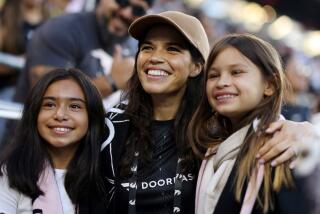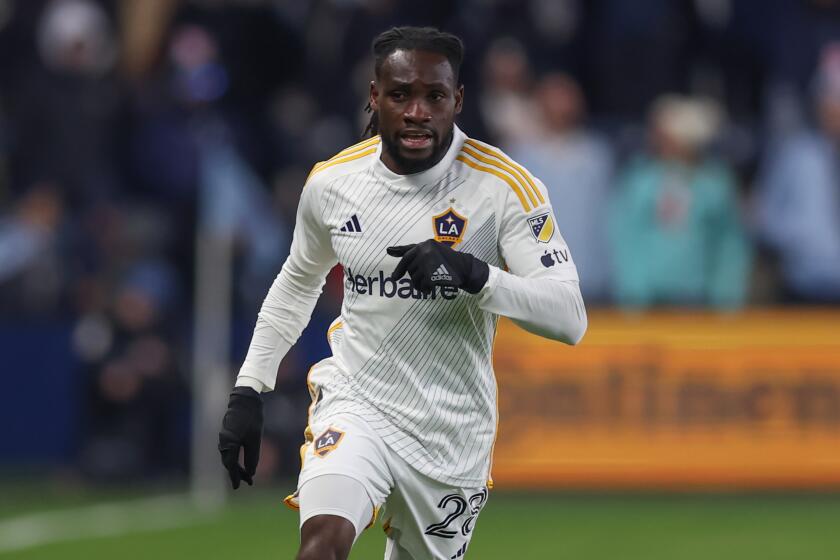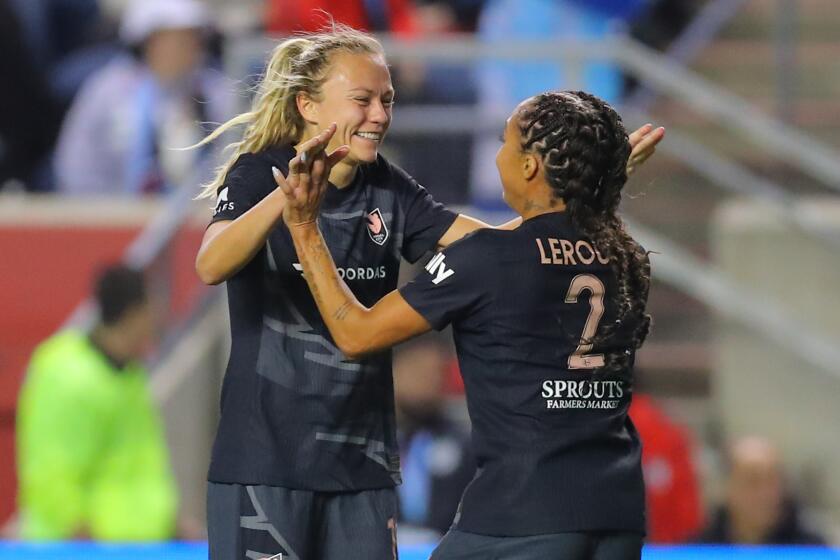Column: Americans’ attacking style in World Cup qualifying win shows the team has options

Landon Donovan could be right. This could be the most talented U.S. men’s national team ever.
The claim made by the now-retired Donovan earlier this year elicited some snickers at the time, if not rolls of eyes. It was no secret he wasn’t fond of Jurgen Klinsmann and this sounded like another attempt to disparage the former U.S. manager.
Was Donovan overstating the ability of American players to emphasize Klinsmann’s role in the U.S. team’s disastrous start of World Cup qualifying?
In retrospect, maybe not.
The United States’ 6-0 victory over Honduras in a World Cup qualifying matcn in San Jose on Friday night was shocking, but not because of the lopsided scoreline.
This didn’t look like a traditional U.S. team.
With 18-year-old Christian Pulisic and veteran Clint Dempsey leading the attack, the Americans played with flair. They were creative. They were dynamic.
“It looked pretty,” goalkeeper Tim Howard said.
Pretty? U.S. teams have often been praised for their determination and organization, but when was the last time they were complimented for their style?
And who would have ever imagined Bruce Arena would be the coach to get that out of them?
Arena took over in November, entrusted by U.S. Soccer to restore order to a team that unraveled into chaos under Klinsmann. The utilitarian Arena was here to get results. Style was secondary.
The circumstances forced the U.S. to showcase its attacking talent. After starting the final stage of World Cup qualifying by falling to Mexico and Costa Rica, the U.S. was in a must-win situation. A draw wouldn’t suffice. The Americans had to score.
Deciding to attack the defensively inclined Honduras team with two forwards and an attacking midfielder behind them, Arena deployed Dempsey and Jozy Altidore up top with Pulisic as the playmaker.
Darlington Nagbe, who fell out of favor with Klinsmann, started on the left side of the midfield.
With Pulisic, Dempsey and Nagbe, the U.S. had three players capable of taking on defenders, not only in the open field, but also in tight spaces. Previous American teams rarely had more than one player like this on the field at once.
While Nagbe was focused more on his defensive responsibilities, Pulisic and Dempsey conjured chance after chance. Dempsey scored a hat trick. Pulisic had a goal and two assists.
Arena’s decision to play Pulisic in a central role instead of on the right flank offered the teenager more opportunities to link up with Dempsey, setting up two of Dempsey’s goals.
“He’s strong, he’s technical, he makes good runs,” Pulisic said.
The constant danger created by Pulisic and Dempsey freed other players to concentrate on doing what they do best.
Altidore didn’t have to create. Instead, he was able to use his imposing frame to hold the ball until he could feed an oncoming Pulisic or Dempsey. Only five minutes into the game, Altidore received a pass from Pulisic, who continued his run into the penalty box. Altidore found Pulisic, who slanted a shot that was blocked by goalkeeper Donis Escober, but Sebastian Lletgat pounced on the rebound and put the U.S. ahead, 1-0.
“The combination of Altidore-Dempsey-Pulisic was outstanding,” Arena said.
Midfielder Michael Bradley was another beneficiary. Bradley was forced to take on a creative role on Klinsmann’s team, but Pulisic and Dempey ensured that would be unnecessary on this night.
While Arena was forced into some of these lineup decisions by injuries, what he saw Friday gives him more options moving forward. For example, when Fabian Johnson returns, perhaps he can play on the right side of the midfield instead of the left, which would allow Nagbe to remain on the field.
Playing this kind of creative lineup has drawbacks and might not translate well against superior opponents. Pulisic lost the ball in the wrong parts of the field on multiple occasions, including a sequence that led to Honduras’ first clear chance.
Nonetheless, the very fact the U.S. had the option of playing like this was a signal of progress.
The return of Arena, who previously coached the national team, was widely viewed as a step back for U.S. Soccer. It wasn’t.






